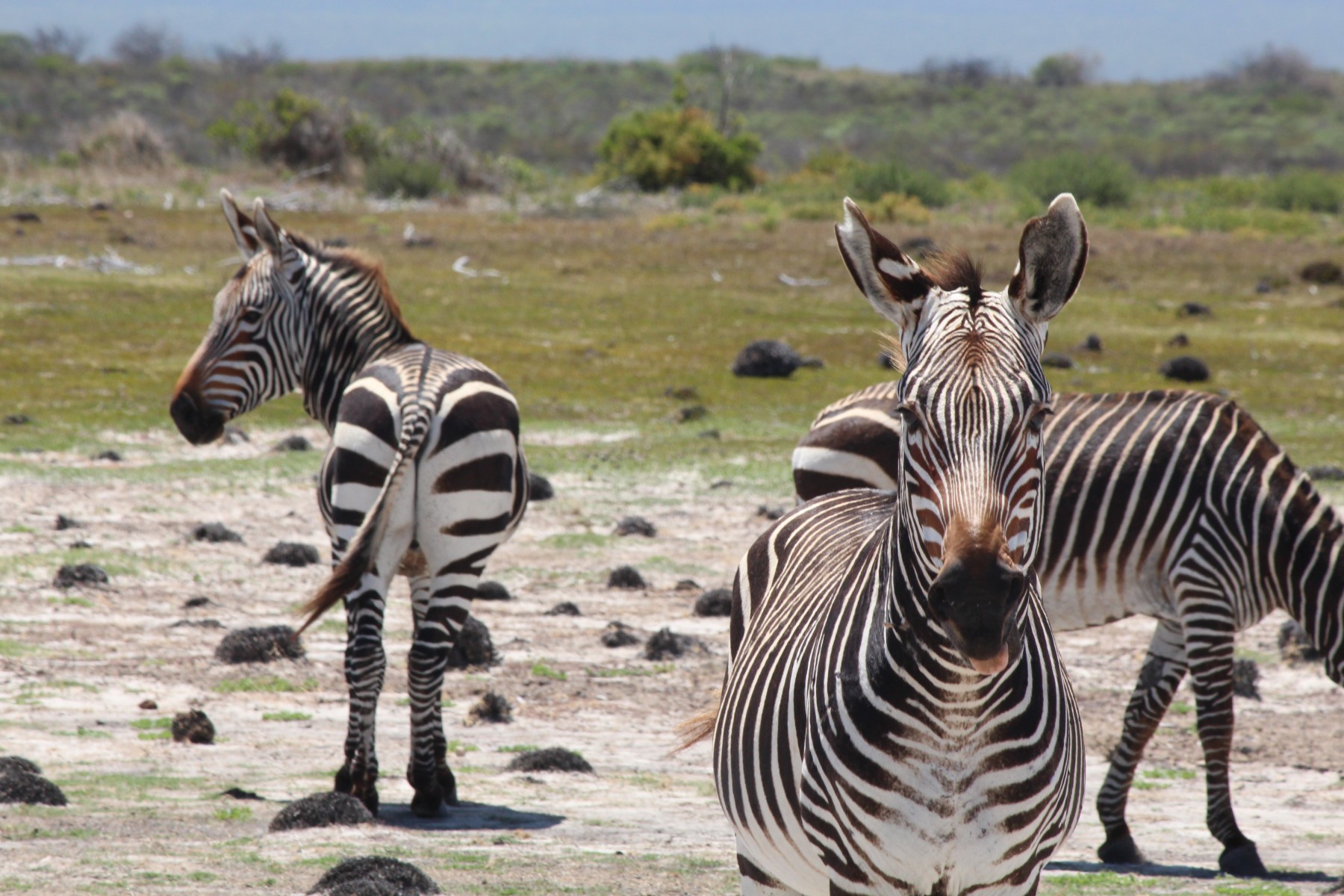Zebra ‘poo science’ improves conservation efforts
How can Zebra poo tell us what an animal’s response to climate change and habitat destruction will be?
That is what scientists from The University of ”≈√€¥´√Ω and Chester Zoo have been investigating in South Africa. Together the team have been using ‘poo science’ to understand how challenges or ‘stressors’, such as the destruction and breakup of habitats, impact on populations of South Africa’s Cape mountain zebra.
To measure ‘stress’ levels of the animals the scientists have been analysing glucocorticoid hormones in the Cape zebra’s droppings. Glucocorticoid hormones are a group of steroid hormones that help regulate the ‘flight or fight’ stress response in animals.The research, which is published in the journal, found that zebras are facing multiple challenges, including poor habitat and gender imbalances, which are likely to compromise their health, have repercussions for their reproduction and, ultimately, a population’s long term survival.
, the senior author from the (SEES) at ”≈√€¥´√Ω, explains: ‘Faecal hormone measurements are easy to collect without disturbing the animals and provide a window into the chronic stress animals are experiencing. Using these indicators we can establish the health of both individuals and populations.’
The team have used a ‘macrophysiological approach’ for the first time ever to evaluate the effectiveness of an ongoing conservation plan. A macrophysiological approach involves comparing animal responses in different nature reserves or geographical regions. By evaluating patterns of stress on a large scale, at-risk populations can be identified as their profile will differ from healthy populations.

Understanding the factors leading to global biodiversity loss is a major societal challenge. In an ever-changing environment, new problems arise quickly so it is essential we use evidence-based methods to continually evaluate the effectiveness of conservation projects.
The researchers also found that using physiological biomarkers, such as hormones from droppings, is an effective way of evaluating the impact of ecological and demographic factors on animal populations. This approach could also tell conservationists how other animals and species might respond to future environmental changes and stressors.
Dr Sue Walker, Head of Applied Science at Chester zoo, said: ’Zoos specialise in population management and have developed a wide range of innovative techniques to monitor the species under their care. This project is a fantastic example of how we can use these knowledge and skills to also help the conservation of wild animals threatened with extinction.’
As well as using this new approach the particular species of the Zebra was also important. , from SEES and the paper’s lead author, added: ‘The Cape mountain zebra is an ideal model species to assess because it has undergone huge ecological and demographic changes in the recent years.
‘Following a massive population decline, they have been actively conserved for the past several decades. The information available on their recovery means we can measure the impacts of both environment and social factors on population health.’
Combining SEES’s knowledge in macroecology with Chester Zoo’s expertise in wildlife physiology allowed the team to gain crucial insights into the Cape Mountain zebra ecology. This then translated into practical applied conservation management initiatives to support the species.
Dr Shultz added: ‘Understanding the factors leading to global biodiversity loss is a major societal challenge. In an ever-changing environment, new problems arise quickly so it is essential we use evidence-based methods to continually evaluate the effectiveness of conservation projects.’
Reference: 'Non-invasive physiological markers demonstrate link between habitat quality, adult sex ratio and poor population growth rate in a vulnerable species, the Cape mountain zebra - - was published in the journal - Jessica M. D. Lea, Susan L. Walker, Graham I. H. Kerley, John Jackson, Shelby C. Matevich, Susanne Shultz

